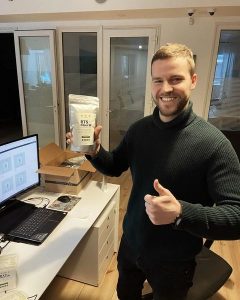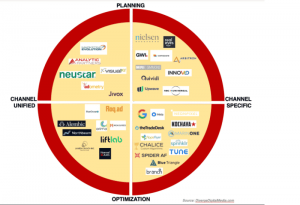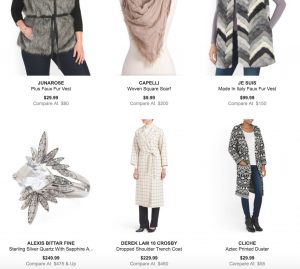It seems that my finely refined way of managing my workflow, something I’ve built over years of experience and learning about what works for my personal effectiveness is all wrong. Thankfully, I have LinkedIn and their collective expertise telling me this and giving me the solution—do it their way.
I’ve been a LinkedIn user and strong advocate for years. A relatively early adopter (in the first 70K or so). It’s been a powerful tool for building relationships, research, and learning.
In earlier days of LinkedIn, one of the great powers was it’s open interface, allowing other tools-critical to me workflow, integrate with the connections I had established in my LinkedIn network. Rather than switching from app to app, I could conveniently get information in the app that I was using at the time.
Silly me, that was so inefficient!
LinkedIn, in it’s wisdom (and possible greed), is on a relentless mission to sever most of those links. Apparently, I am more efficient and more productive by having to jump from app to app, always returning to the LinkedIn mothership, focusing most of my effort there.
LinkedIn captured me early on with groups, Q&A’s and other functions. Despite many idiots. the groups, in particular, were a great place of learning, discussion, and engagement. But, at least for me, their utility has plummeted, by changes in the system and how we can use them.
LinkedIn Pulse, initially captivated me. Carefully curated posts, by great thinkers. I was thrilled when I was invited to start publishing (Yeah, maybe part of it was ego), but I thought it a great channel to extend engagement. Now it’s become a vast wasteland of uncurated junk. Everyone should have a voice–but because of lack of curation, limits in search, and so forth, it’s hard to find stuff and hard for my stuff to be found. I know, I should be publishing this post in Pulse, but I know far more LinkedIn users will find this outside LinkedIn.
But perhaps I’m wrong and should pay attention to LinkedIn’s implicit guidance, quantity over quality.
I pay attention to LinkedIn’s advice in making connections, make it personal, change their template to a personalized introduction. I’ve always done that, with great results. Thanks LinkedIn for that guidance.
And then LinkedIn Mobile comes along. Imagine my horror in making a connection request from my phone. I wasn’t offered the option to customize the invitation message. Apparently, LinkedIn had discovered a better way and I was just behind the times. Apparently, we’re far too busy when we are using our mobiles–after all we are mobile–to personalize requests, so the most efficient and effective way of connecting with people while on the go, who are presumably on the go themselves, is through a standard template—“I’d like to add you to my…….”
Yes, the mobile world is different, I suppose it means there are much more efficient and effective ways of building networks and connecting with people in mobile, I thank LinkedIn for it’s always great wisdom in pointing out the errors of my thinking.
Ah yes, and mobile LinkedIn. Somehow, I always thought one of the values of information on my phone or tablet should be the most current. It’s nice to know before going into a meeting that something has change, something has happened. But mobile LinkedIn seems to have a mind and time pace of it’s own. It’s OK to be days behind. I thought I had tricked the system, I shifted my preferred access to LinkedIn from the native IOS app, to Safari and Chrome—that way I was getting the latest in LinkedIn.
But then I wonder. LinkedIn might know something. Surely, it could keep it’s mobile apps current with the web based app. By not doing so, they must be telling me I’m missing something. I’m trying to figure it out, maybe I’m supposed to shoot from the lip, maybe I spend to much time on my mobile. I’m sure someday soon, I’ll see LinkedIn’s wisdom, for the moment, I’m confused. Perhaps, someone could help me.
Then there’s endorsements. I had long valued (and still do) LinkedIn’s recommendation system. I’ve been blessed in receiving some very heartfelt and great recommendations. I consider it a privilege to recognize others with recommendations. But apparently, taking the time to offer personal observations is very inefficient. It’s been supplemented by endorsements. I’m honored that people I may have never met, and with whom I’ve had limited social engagement are endorsing me for skills that I didn’t realize I had. Thank you LinkedIn for helping me broaden my perspectives of my capabilities.
I’m also appreciative of LinkedIn’s continued recommendations on endorsements. Apparently Data Science is far more accurate than my personal experience of an individual’s capabilities. I”m asked to endorse people I know in areas of competency I had never realized. With many, I struggle, I’ve never thought them to be great at that area, but of course, that’s just my observation and experience. Data Science must prevail, there must be an error in my thinking.
I had always thought my profile, my content, my engagement, my connections were mine. Free to access, free to download as I want. LinkedIn had allowed me to do that, but now it’s vacillating. Some days it’s really LinkedIn’s, someday’s I have to submit a request, “please, please let me download my information.” I thought mine was mine, but am not sure. I worry that LinkedIn might think what’s mine is theirs, and I might be limited in my access to it.
But then, LinkedIn must know better, after all there are 100’s of millions using it and they are a eminently cool company. I’m thinking I misreading things, they know better than I, so if I just stop trying to do things my way, if I start doing things the way they seem to be subtly guiding me to do, I am probably better for it. After all, they must know that my workflow is very inefficient and they have a better way.
The latest learnings have been with LinkedIn’s new messaging system. I do like the conversation threads, after all, it emulates my mobile messaging platform. It also emulates the conversation threads capability I’ve had in my email systems for years. Good to see LinkedIn’s final endorsement of that capability.
But then, I’m still learning about what is most effective and efficient in their new messaging/email system.
For example, people send me very nice connection requests, in accepting their requests, I always liked to respond, referring to something they’ve said in the invitation. But that’s disappeared. I think I’ve figured out the work around–it’s not what I would prefer, but I know LinkedIn is telling me something, so I’m trying to do my job of learning.
I’ve also learned that my Outlook or Gmail Inbox’s are apparently not effective or efficient ways to consolidate much of my communication. I used to get LinkedIn mail sent to my Gmail Inbox. I could conveniently respond from there, and like magic, LinkedIn could handle it, and the recipient would get a response in their email system Inbox and in LinkedIn. How convenient!
But that must be inefficient. I seem to be getting some, but not all. This morning I was doing emails, got to my Zero Inbox, then to my surprise, in looking at LinkedIn, I had a number of messages.
Note to self, now after clearing Gmail, go to LinkedIn—maybe I have that backwards, maybe they want me to start in LinkedIn. I’ll figure it out.
Also, in recent days I’ve discovered I’m responding to In-Mail incorrectly. I used to reply, just ignore it, or delete it.
In my responses, I didn’t realize how wrong I have been. Apparently, the right way to respond to an In-Mail is to “code” it. Before I respond, I have to tell people I’m interested, I want to do something later, or I’m not interested. Then I get to tell people what I really think and want to do.
Of course, silly me, I thought my own style of communicating and engaging people was effective, but again, I come to learn that LinkedIn has a far better vision of how we should engage, how we should communicate, and how we should work.
As I look at the trends and read the signals (yes, regular readers know I’m sometimes slow at this), I’m thinking LinkedIn needs to be at the center of my workflow.
All my work, rather than starting with my calendar, my CRM, my email system, has to be centered in LinkedIn.
The experience they have from 100’s of millions of users, their view of how to build effective relationships, their view of how we communicate, recommend, praise, and engage people must be far superior to my own misguided thinking.
After all, 100’s of millions of users and Data Science has to know what’s better for me than me.
I am slow on the uptake, I futilely question and resist, I sometimes pushback. Inevitably I get the message.
LinkedIn, thank you for pointing out the error of my ways. Thanks for your subtle guidance in changing your system to force me into your workflow. Thanks for pointing out the error of most other systems–systems that provide open interfaces and encourage linking together. It is terribly inefficient–we really should gravitate to one closed system that dictates what our workflow should be.
I think I’m getting the message.
Digital & Social Articles on Business 2 Community(92)





